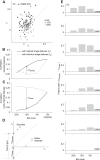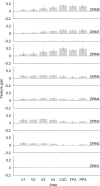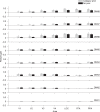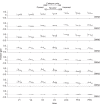Sharpening of Hierarchical Visual Feature Representations of Blurred Images
- PMID: 29756028
- PMCID: PMC5940673
- DOI: 10.1523/ENEURO.0443-17.2018
Sharpening of Hierarchical Visual Feature Representations of Blurred Images
Abstract
The robustness of the visual system lies in its ability to perceive degraded images. This is achieved through interacting bottom-up, recurrent, and top-down pathways that process the visual input in concordance with stored prior information. The interaction mechanism by which they integrate visual input and prior information is still enigmatic. We present a new approach using deep neural network (DNN) representation to reveal the effects of such integration on degraded visual inputs. We transformed measured human brain activity resulting from viewing blurred images to the hierarchical representation space derived from a feedforward DNN. Transformed representations were found to veer toward the original nonblurred image and away from the blurred stimulus image. This indicated deblurring or sharpening in the neural representation, and possibly in our perception. We anticipate these results will help unravel the interplay mechanism between bottom-up, recurrent, and top-down pathways, leading to more comprehensive models of vision.
Keywords: Decoding; Deep Neural Network; fMRI.
Figures








References
-
- Bansal A, Sheikh Y, Ramanan D (2017) PixelNN: Example-based image synthesis. arXiv Preprint arXiv 170805349.
-
- Bar M, Aminoff E (2003) Cortical analysis of visual context. Neuron 38:347–358. - PubMed
Publication types
MeSH terms
LinkOut - more resources
Full Text Sources
Other Literature Sources
